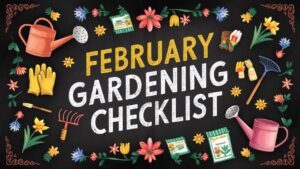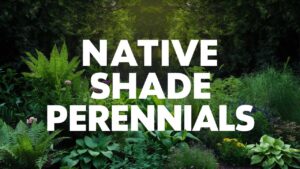In this guide, we will explore a selection of stunning evergreen plants that not only thrive in containers but also add beauty and structure to your landscapes.
Boxwood
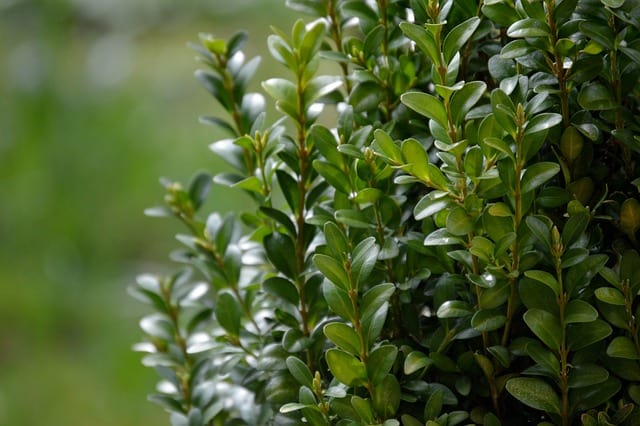
Boxwood (Buxus spp.) is an incredibly popular evergreen that brings a level of elegance to any garden. Its dense, compact growth and small, glossy leaves provide an ideal backdrop for colorful blooms. When considering varieties suitable for containers, look for:
Buxus microphylla var. koreana (Korean Boxwood): A slow-growing variety characterized by small, dense leaves. It tolerates pruning and shaping very well, making it perfect for topiaries.
Buxus sempervirens (Common Boxwood): The traditional choice for hedging, it can also be used in container gardening when kept trimmed to size.
Buxus ‘Green Velvet’: This variety has a rounded habit and rich green foliage, making it particularly eye-catching in planters throughout the year.
Boxwood thrives in a variety of soil types but prefers well-drained, slightly acidic conditions. They flourish when planted in partial shade but can tolerate full sun if given sufficient water. Regular pruning helps maintain their size and shape, allowing you to create stunning focal points in your arrangements.
Cypress
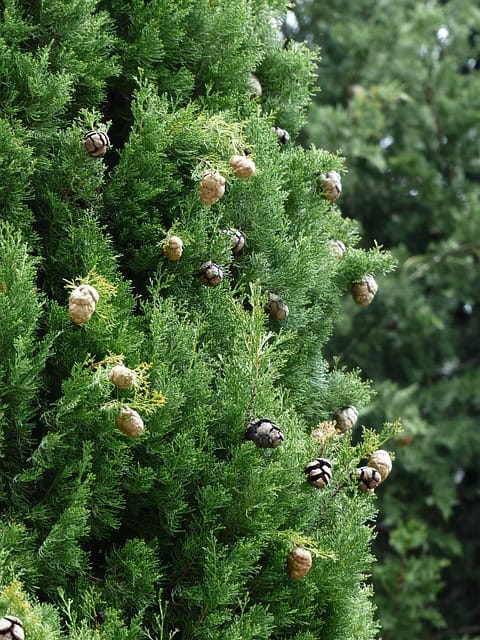
Cypress trees bring an air of majesty to any outdoor space with their tall, graceful stature and feathery foliage. For container planting, consider:
Cupressus sempervirens (Italian Cypress): Known for its narrow, columnar shape, this variety is perfect for adding vertical interest to your planters, especially in Mediterranean-themed gardens.
Chamaecyparis obtusa ‘Nana’: This dwarf variety is petite and is perfect for smaller containers. With its soft, green foliage, it brings a lush touch to your garden.
Cypress trees prefer well-drained soil and thrive in full sun. Their drought tolerance once established makes them an excellent choice for low-maintenance gardening. Utilize cypress in large planters to create height or as a natural screen for privacy, enhancing overall aesthetic appeal.
Inkberry Holly
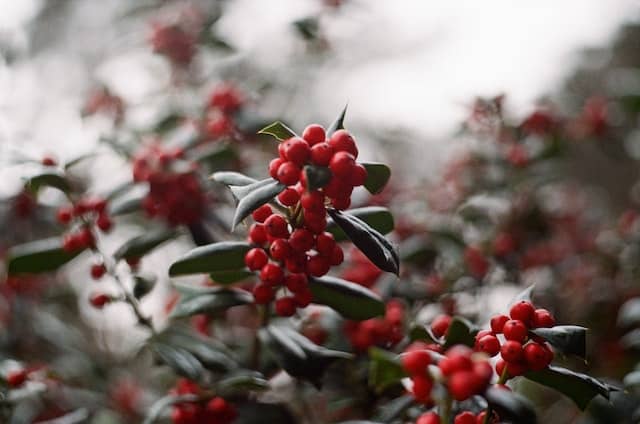
Inkberry Holly (Ilex glabra) is a versatile shrub known for its glossy green leaves and adaptability to various garden conditions. Container-friendly varieties include:
Ilex glabra ‘Shamrock’: A compact variety that reaches only about 3 feet tall, making it suitable for smaller spaces and planters.
Ilex glabra ‘Densa’: This particular variety is renowned for its dense growth habit and rounded shape, providing an excellent option for honing and shaping when grown in containers.
Inkberry Holly does well in moist soils but is forgiving enough to adapt to drier conditions. Its resilience makes it perfect for container arrangements, especially when clustered with other shrubs or flowering plants to create an integrated garden design.
Japanese Holly

Japanese Holly (Ilex crenata) adds a touch of sophistication to any container garden. Consider these varieties for your planters:
Ilex crenata ‘Sky Pencil’: This narrow, upright cultivar has a striking columnar shape, making it a beautiful focal point in any arrangement.
Ilex crenata ‘Soft Touch’: As the name suggests, it has soft, fine-textured foliage, which is not only visually appealing but also works well when creating layered plantings.
Japanese Holly prefers partial to full shade and can tolerate drought conditions once established. Its compact nature allows it to be used in various container sizes and styles, providing a lush green backdrop alongside flowering plants or as an accent piece.
Camellia
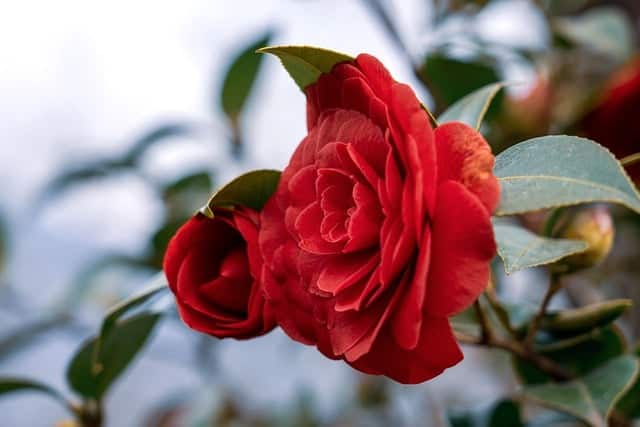
Camellia is not only an evergreen but also a showy bloomer, providing year-round beauty in your planters. Suitable varieties include:
Camellia japonica: This species offers numerous cultivars known for their gorgeous flowers. ‘Debutante’ blooms in soft pink, while ‘Lady Laura’ displays striking red blooms.
Camellia sasanqua: This variety blooms earlier than Camellia japonica, typically in the fall. ‘Yuletide’ is a vibrant red variety that stands out beautifully in planters.
Camellias thrive in slightly acidic, well-drained soils and prefer sheltered spots with partial shade. The glossy leaves serve as a lovely contrast to the dazzling blooms, creating eye-catching arrangements all year round.
Daphne
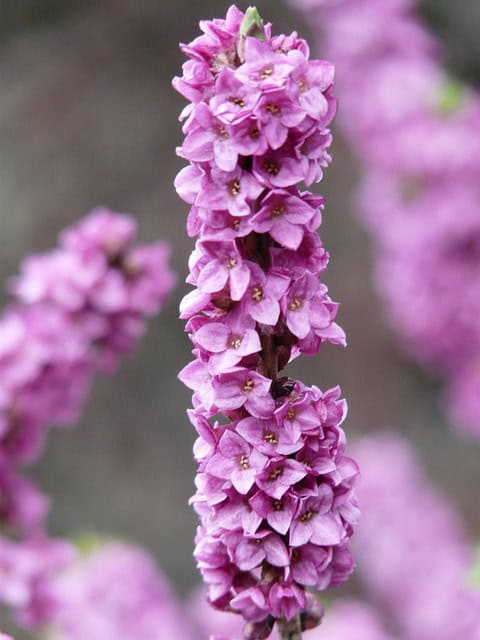
Few evergreens possess the intoxicating fragrance of Daphne. Suitable for containment are:
Daphne odora: Known as Winter Daphne, this variety is prized for its highly fragrant pink flowers that bloom in late winter to early spring. It works perfectly in smaller planters.
Daphne x transatlantica ‘Eternal Fragrance’: Renowned for its continual blooming throughout the growing season, this hybrid offers a delightful aroma, making it an asset to a fragrant garden arrangement.
Daphne prefers well-drained soil and a spot with partial shade, as excessive sunlight can lead to leaf scorch. Its compact size allows for creative planting arrangements, either solitary or combined with colorful companions.
Loropetalum
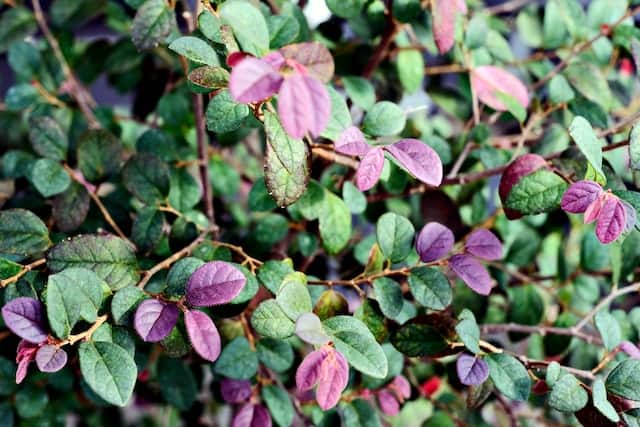
Loropetalum, or Chinese fringe flower, brings vibrant color to planters with its unique foliage and flowers. Consider these varieties:
Loropetalum chinense var. rubrum ‘Ruby’: With striking purple foliage and pink, fragrant flowers, this variety excels in container gardens.
Loropetalum chinense ‘Plum Gorgeous’: This variety stands out with vibrant burgundy leaves and produces beautiful pink flowers during spring.
Loropetalum thrives in full sun to partial shade and does best in well-drained soil. Its dynamic foliage and flowering ability make it an outstanding choice for mixed containers, providing visual interest and seasonal color.
Dwarf Threadleaf Cypress
For unique textures, the Dwarf Threadleaf Cypress (Chamaecyparis obtusa) is an excellent choice. Suitable varieties for containers include:
Chamaecyparis obtusa ‘Nana Gracilis’: This dwarf variety offers fine, threadlike foliage which cascades gracefully, providing a whimsical touch to planter designs.
Chamaecyparis pisifera ‘Gold Mop’: Another attractive option, featuring golden foliage that drapes beautifully, making it a perfect accent in mixed containers.
Dwarf Threadleaf Cypress thrives in full sun and prefers moist, well-drained soil. They add a distinctive, textural element to arrangements, making them a great candidate for container gardening alongside other flowering or leaf-textured plants.
Mahonia

Mahonia, or Oregon Grape Holly, provides attractive glossy leaves and vibrant yellow flowers. Container-friendly varieties include:
Mahonia aquifolium: Known for its blue berries and evergreen foliage, this variety works well in pots and produces lovely yellow clusters of flowers in the spring.
Mahonia ‘Soft Caress’: This compact version features delicate, fern-like leaves and fragrant yellow flowers, making it a stunning choice for smaller containers.
Mahonia prefers well-drained, moist soil and is perfect in partial shade. Its seasonal transition from flowers to berries makes it a visually dynamic choice for planters throughout the year, especially when paired with other colorful species.
Distylium

Distylium is becoming a favorite for its resilience and unique foliage. Suitable varieties for containers include:
Distylium ‘Vintage Jade’: Known for its dense, evergreen foliage and a compact growth habit, this cultivar thrives in smaller space containers and adapts well to container environments.
Distylium ‘Blue Cascade’: This variety features striking blue-green leaves and a beautiful round form, providing texture and a unique color variation in planters.
Distylium prefers well-drained soil and will flourish in full sun to partial shade. Its drought resistance and low maintenance requirements make it both beautiful and practical for container gardening, especially when mixed with flowering plants.
Pieris

Pieris, or Lily-of-the-Valley shrub, brings both beauty and fragrance to planters. Container varieties include:
Pieris japonica ‘Dorothy Wyckoff’: This variety boasts stunning clusters of white bell-shaped flowers and glossy green leaves, ideal for creating a striking accent in containers.
Pieris japonica ‘Valley Frost’: Known for its creamy pink blooms and attractive foliage, this compact form is perfect for smaller planters.
Pieris thrives in acidic, well-drained soil, and partial shade helps to protect its delicate foliage. Their evergreen nature provides year-round beauty, creating an enchanting addition to your container designs.
Olive
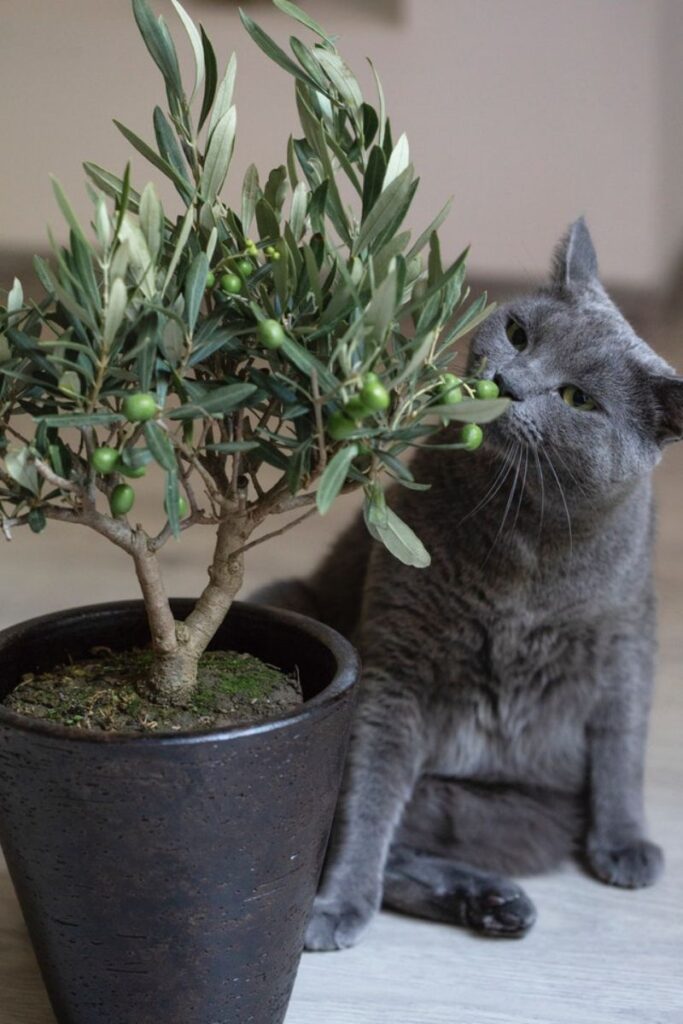
The Olive tree, particularly the European Olive (Olea europaea), is a remarkable choice for gardeners who appreciate a Mediterranean flair. For container planting, look for:
Olea europaea ‘Arbequina’: This compact variety is well-suited for pots, producing small, flavorful olives and is known for its ornamental appeal.
Olea europaea ‘Little Ollie’: A dwarf cultivar that grows to about 3 to 4 feet, this variety works beautifully for smaller patios or as a decorative indoor plant.
Olive trees thrive in full sun and well-drained soil, enjoying dry conditions. Their rustic charm and unique silvery-green leaves can enhance any outdoor space, serving as excellent accent pieces when paired with herbs or other Mediterranean plants.
Viburnum
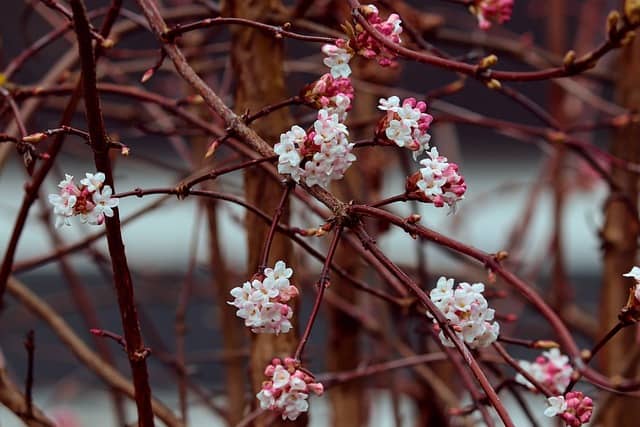
Viburnum is a versatile plant well-suited for container gardening. Consider these varieties:
Viburnum tinus: This evergreen shrub blooms in late winter with white or pink flowers and has dark green leaves. It’s compact and can easily fit into various planters.
Viburnum ‘Pink Dawn’: Emerging with fragrant pink flowers in early spring, this variety is slower growing and maintains a manageable size for container arrangements.
Viburnum prefers well-drained soils, thriving in full sun to partial shade. Its capacity for seasonal beauty, enhanced by aromatic blooms, adds significant visual and sensory interest to container designs.
Abelia
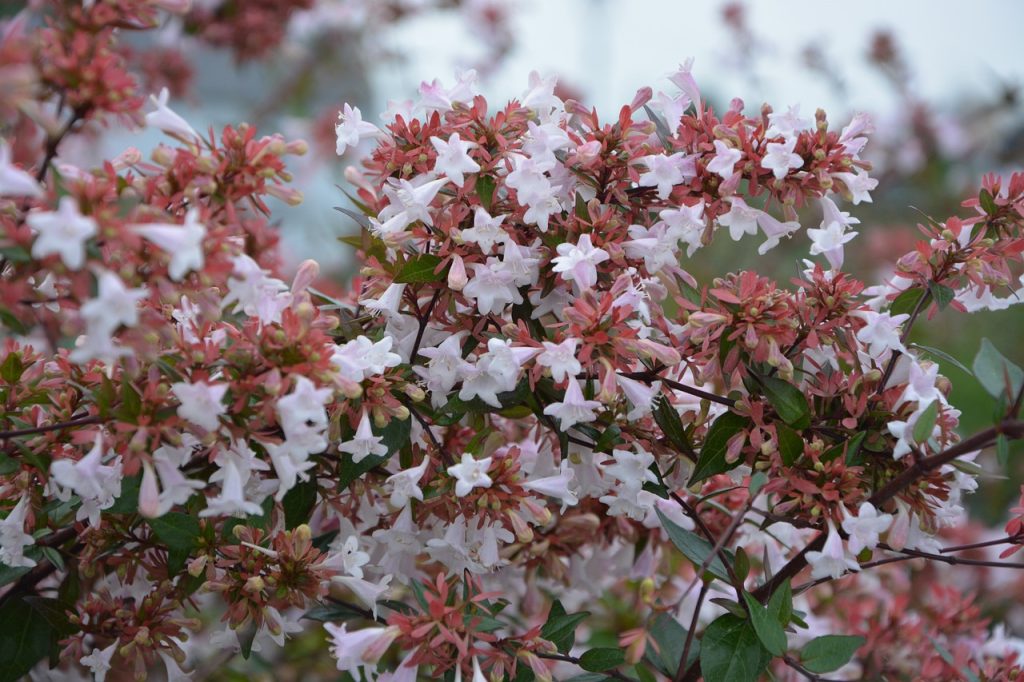
Abelia brings an extended blooming season and soft, colorful flowers to the table. Consider these varieties for your containers:
Abelia x grandiflora ‘Kaleidoscope’: A compact variety noted for its bright golden foliage and pink flowers, making it a vivid choice for containers.
Abelia ‘Little Richard’: This variety offers a low, mounded form with fragrant white-pink flowers, making it suitable for smaller spaces and containers.
Abelia thrives in full sun to partial shade and performs well in well-drained soil. As a pollinator-friendly shrub, incorporating Abelia in your planters not only beautifies your outdoor space but invites beneficial wildlife into your garden.
Gardenia
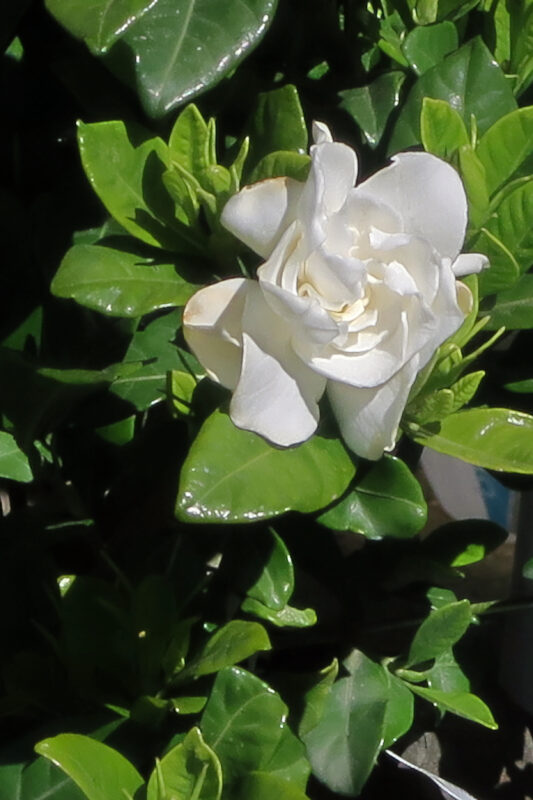
Gardenia is renowned for its stunning creamy blooms and intoxicating fragrance. Container-friendly varieties include:
Gardenia jasminoides ‘Radicans’: A dwarf variety with small, fragrant flowers, ideal for smaller planters or even as ground cover in larger pots.
Gardenia jasminoides ‘August Beauty’: Well-known for its lush blooms and scent, this standard variety can grow large in containers, providing a beautiful focal point.
Gardenias prefer acidic, well-drained soils and enjoy full sun to partial shade. Their exquisite blooms and scent create a captivating sensory experience in your outdoor space.
Arborvitae
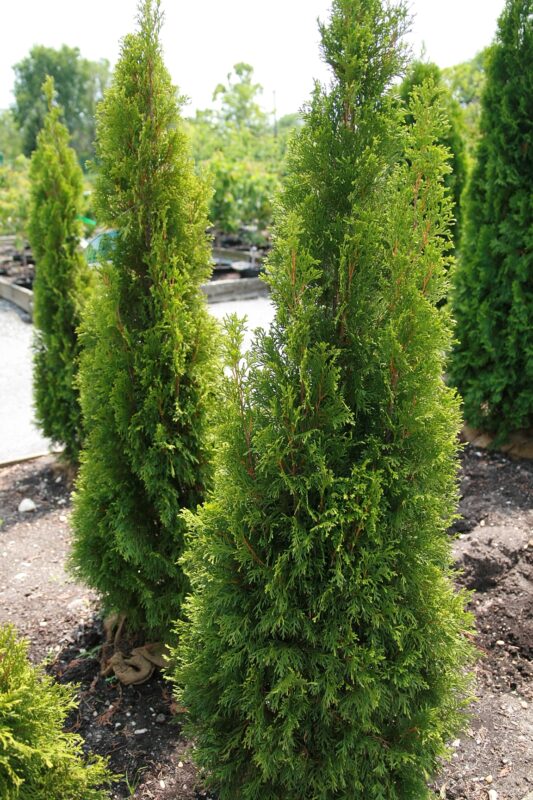
Arborvitae (Thuja) is a classic choice for gardeners who value both privacy and structure. Suitable varieties for containers include:
Thuja occidentalis ‘Smaragd’ (Emerald Green Arborvitae): This narrow, upright variety maintains a lush green color year-round and is excellent as a container focal point or privacy screen.
Thuja plicata ‘Whipcord’: A compact, fluffy variety that has a distinctive, soft texture; it grows well in pots due to its manageable size.
Arborvitae prefers full sun and well-drained soil. Regular pruning helps maintain desired shapes, allowing for beautiful, contained arrangements that enhance the tailored look of your garden.
Holly
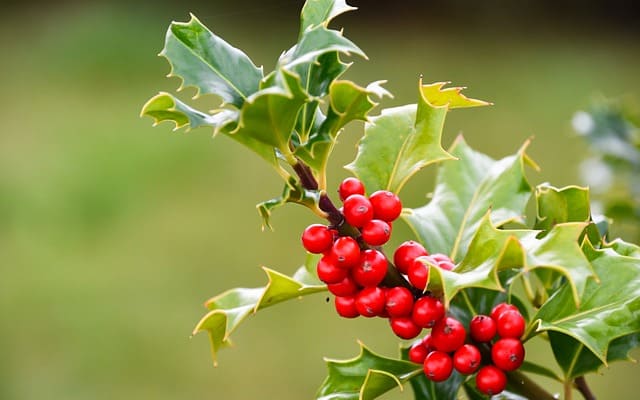
Holly is wonderfully recognized for its vibrant red berries and evergreen leaves. Varieties suitable for container gardening include:
Ilex meserveae ‘Blue Girl’: This female holly produces beautiful red berries and is perfect for pots, thriving in a variety of conditions.
Ilex crenata ‘Helleri’: A compact holly with a dense growth habit, its dark green leaves work nicely in planters without the prickly texture typical of other hollies.
Holly thrives in partial to full sun and enjoys well-drained soils. Its vibrant seasonal displays make it a must-have for festive arrangements, accentuating the holiday spirit throughout the year.
Juniper
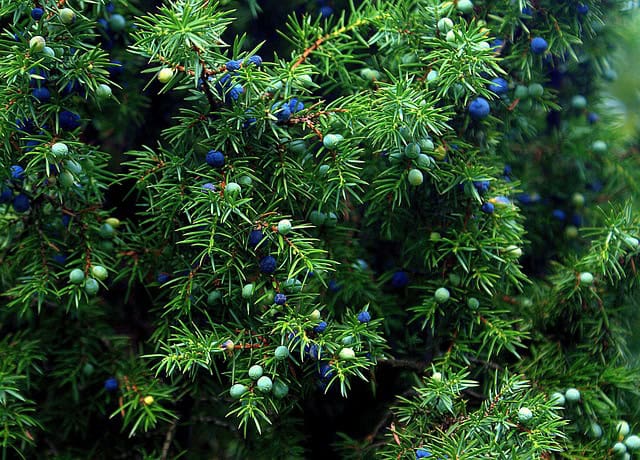
Juniper is a versatile evergreen that accommodates many styles and preferences. Container-friendly varieties include:
Juniperus procumbens ‘Nana’: A low-growing, spreading variety, it’s perfect for cascading over the edges of planters, offering texture and resilience.
Juniperus chinensis ‘Spartan’: This columnar variety has a slender form, perfect for adding height and interest to your arrangements.
Junipers prefer full sun and well-drained soil. Their adaptability allows for various designs and arrangements, integrating seamlessly with florals or other structural evergreens and adding unique layers to your planters.
Magnolia
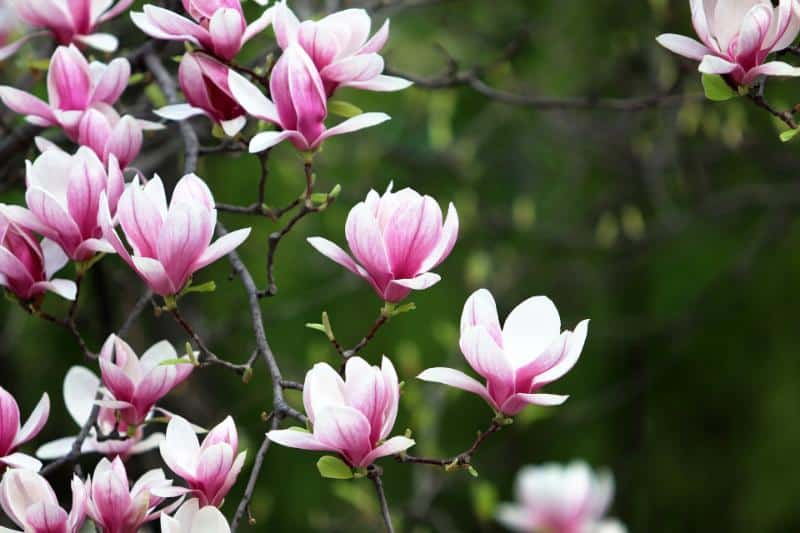
Magnolia brings beauty and fragrance to planters. Consider these varieties:
Magnolia grandiflora ‘Little Gem’: A dwarf version of the classic Southern Magnolia, it provides fragrant, creamy white flowers while remaining compact—perfect for containers.
Magnolia ‘Jane’: This hybrid variety offers stunning purple flowers and has a more moderate growth pattern, making it ideal for smaller spaces and pot arrangements.
Magnolias thrive in full sun and well-drained, fertile soil, allowing for stunning displays during blooming. Their striking presence and delightful scent captivate not only garden enthusiasts but anyone who encounters them.
Osmanthus

Osmanthus is known for its delightful fragrance and ornamental foliage. Container-friendly varieties include:
Osmanthus fragrans ‘Fudingzhu’: This variety produces fragrant white flowers in the fall and is often used for ornamental purposes, fitting well into various planter styles.
Osmanthus heterophyllus ‘Goshiki’: Known for its colorful leaves that vary in hue from green to yellow and white, this shrub adds visual interest and has a lovely scent when in bloom.
Osmanthus prefers well-drained soil and can thrive in sun or partial shade, making it easy to implement into various garden designs. Its aromatic quality adds depth to your garden’s sensory experiences, blending beautifully with flowering plants.
Colorado Blue Spruce

Colorado Blue Spruce (Picea pungens) is one of the most stunning evergreens, featuring striking blue tones. Suitable for container planting are:
Picea pungens ‘Glauca Globosa’: A dwarf globe-shaped variety, this blue spruce grows slowly, making it ideal for decorative pots and small gardens.
Picea pungens ‘Fat Albert’: A compact and conical form, this variety is a perfect centerpiece for larger planters, boasting vibrant blue foliage.
Colorado Blue Spruce thrives in full sun and well-drained soil. Its majestic beauty adds formality to any garden, and its lovely color creates stunning winter displays that captivate all year round.



